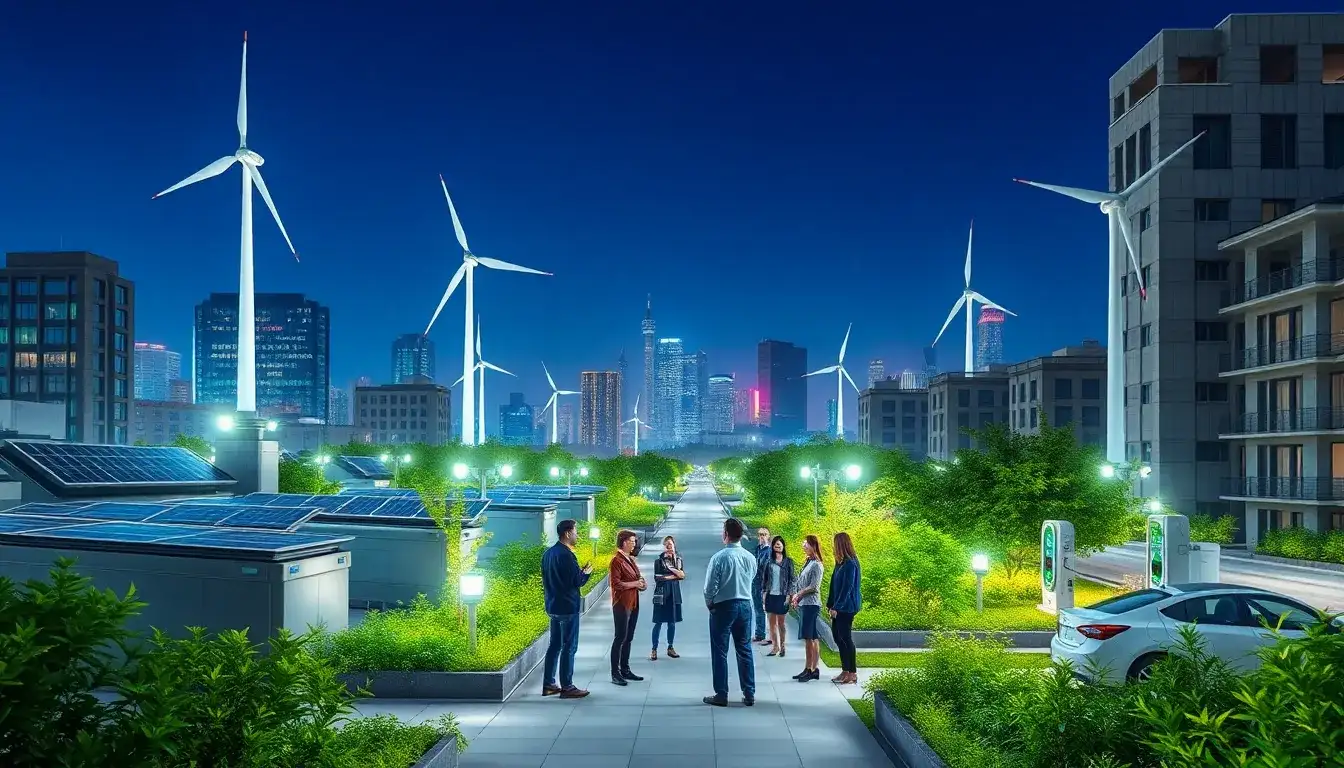
Innovative Practices in Smart Energy Driven by Policy: Building a Green Future
1. Policy Background: A Golden Era for Microgrid Development
In recent years, the government has vigorously promoted the transformation of the energy structure and the realization of “dual carbon” goals. Microgrids, as a vital component of new power systems, have become a focal point for policy support:
- “14th Five-Year Plan for Modern Energy System”: This document explicitly encourages the coordinated development of distributed energy, energy storage, and microgrids to enhance energy efficiency.
- Implementation Opinions on Promoting Microgrid Construction: The guidelines advocate for the establishment of microgrids in industrial parks, commercial complexes, and other settings, supporting multi-energy complementarity and intelligent scheduling.
- Local Subsidy Policies: Various regions, such as Jiangsu and Guangdong, have introduced subsidy policies that offer investment rewards or electricity price discounts for microgrid projects.
Key Policy Directions:
- ✅ Increase the penetration of renewable energy
- ✅ Enhance grid flexibility and resilience
- ✅ Promote digitalization and intelligence in energy management
2. Market Demand: Why Do Businesses Need Microgrids?
Amid fluctuations in electricity prices, energy consumption controls, and pressures for carbon neutrality, businesses face significant challenges in energy management:
- High Energy Costs: The widening gap between peak and off-peak electricity prices is driving up costs for industrial and commercial users.
- Insufficient Power Stability: Extreme weather and grid failures disrupt production continuity.
- Carbon Reduction Pressures: Companies need to adopt clean energy substitutes to lower carbon emissions.
- Compliance with Regulatory Requirements: There is a need to meet energy consumption monitoring and green power consumption policies.
The EMS (Energy Management System) has emerged to provide businesses with integrated solutions covering “source-grid-load-storage-charging,” helping achieve:
- 🔋 Cost Efficiency: Dynamically optimizing energy distribution to reduce electricity costs by 10%-30%
- ⚡ Reliability: Supporting grid-connected and off-grid mode switching to ensure power supply for critical loads
- 🌱 Decarbonization: Maximizing the consumption of clean energy sources such as solar and wind
3. Regional Characteristics: Customized Microgrid Solutions
Energy demands and resource endowments vary significantly across different regions. The EMS supports modular customization to adapt to various scenarios:
- Eastern Industrial Zones (e.g., Yangtze River Delta, Pearl River Delta)
- Demand Characteristics: High electricity prices, high energy consumption, and a need for stable power supply
- Solution Highlights: Integration of solar power and energy storage to flatten peak and off-peak price differences; intelligent adjustment of production line loads to avoid excess demand charges; interaction with local grids to participate in demand response for additional revenue
- Northwest Renewable Energy Rich Areas (e.g., Xinjiang, Qinghai)
- Demand Characteristics: Abundant wind and solar resources, but insufficient consumption capacity
- Solution Highlights: Coordinated control of wind and solar energy storage to enhance local consumption rates; support for off-grid island operation to address power supply issues in remote areas
- Urban Commercial Complexes
- Demand Characteristics: Diverse energy use scenarios that require balancing energy savings with user experience
- Solution Highlights: Flexible adjustment of loads such as air conditioning and lighting, saving energy without sacrificing comfort; real-time carbon emission monitoring to help create a “zero-carbon shopping mall” label
4. Core Advantages of EMS
- Comprehensive Technical Capability: Covers the entire energy management, equipment monitoring, and predictive optimization chain
- Open Compatibility: Supports protocols like Modbus and IEC61850, allowing seamless integration with solar inverters and energy storage PCS
- AI Empowerment: Uses machine learning to predict load and generation curves, dynamically optimizing strategies
- Visualization Platform: Generates energy efficiency reports and carbon emission lists at the touch of a button, meeting regulatory and disclosure requirements







